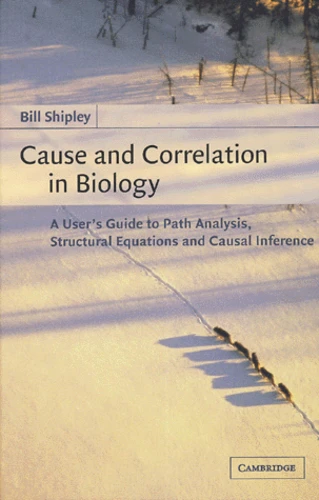Cause And Correlation In Biology. A User'S Guide To Path Analysis, Structural Equations And Causal Inference
Par :Formats :
- Paiement en ligne :
- Livraison à domicile ou en point Mondial Relay indisponible
- Retrait Click and Collect en magasin gratuit
- Nombre de pages320
- PrésentationRelié
- Poids0.665 kg
- Dimensions16,0 cm × 23,5 cm × 1,9 cm
- ISBN0-521-79153-7
- EAN9780521791533
- Date de parution14/04/2001
- ÉditeurCambridge University Press
Résumé
This book goes beyond the truism that "correlation does not imply causation" and explores the logical and methodological relationships between correlation and causation. It presents a series of statistical methods that can test, and potentially discover, cause-effect relationships between variables in situations in which it is not possible to conduct randomized or experimentally controlled experiments. Many of these methods are quite new and most are generally unknown to biologists. In addition to describing how to conduct these statistical tests, the book also puts the methods into historical context and explains when they can and cannot justifiably be used to test or discover causal claims. Written in a conversational style that minimizes technical jargon, the book is aimed at practicing biologists and advanced students, and assumes only a very basic knowledge of introductory statistics.
This book goes beyond the truism that "correlation does not imply causation" and explores the logical and methodological relationships between correlation and causation. It presents a series of statistical methods that can test, and potentially discover, cause-effect relationships between variables in situations in which it is not possible to conduct randomized or experimentally controlled experiments. Many of these methods are quite new and most are generally unknown to biologists. In addition to describing how to conduct these statistical tests, the book also puts the methods into historical context and explains when they can and cannot justifiably be used to test or discover causal claims. Written in a conversational style that minimizes technical jargon, the book is aimed at practicing biologists and advanced students, and assumes only a very basic knowledge of introductory statistics.



